The reason why the planets in our solar system are called “planets” is because they are situated close to the Sun and rotate around this particular star.
The planets that are part of our solar system include:
- Mercury,
- Venus,
- Earth,
- Mars,
- Jupiter,
- Saturn,
- Uranus,
- Neptune.
This is the order in which they are positioned in relation to the Sun. Mercury is the planet that is closest to the Sun, while Neptune is the farthest away. As you can observe, Earth is the third planet from the Sun.
All of the planets orbit the Sun at their own individual speeds. The orbital velocity of the Earth is 107 kilometers per hour. Mercury’s orbital velocity is 170 km/h and Neptune’s is 19 km/h. Consequently, it can be deduced that the closer a planet is to the Sun, the greater its orbital velocity.
Furthermore, with the exception of Mercury, all planets possess an atmosphere, which is a gaseous layer enveloping the planet.
What occurred to Pluto?
Prior to 2006, the solar system consisted of nine planets. However, following adjustments made by the International Astronomical Union to the definition of a planet, Pluto was reclassified as a “dwarf” planet.
Hence, the union established three criteria for a celestial body to be designated as a planet:
- The planet’s orbit revolves around the Sun, meaning it only orbits around that particular star.
- The celestial body must be of sufficient size, with its gravity causing it to assume a spherical shape.
- The planet’s gravitational field must be strong enough to either capture all other celestial bodies within its orbit as satellites or expel them from orbit.
It appears that Pluto is not sufficiently large and also possesses other celestial bodies in its orbit.
What are the dimensions of the planets?
| Mercury | 15 km | # 8 |
| Venus | 38 km | # 6 |
| Earth | 40 km | # 5 |
| Mars | 21 km | # 7 |
| Jupiter | 439 km | # 1 |
| Saturn | 365 km | # 2 |
| Uranus | 159 km | # 3 |
| Neptune | 154 km | # 4 |
As can be observed, Mercury is the smallest planet while Jupiter is the largest.
To gain a deeper comprehension of the dimensions of each celestial body, consider watching the captivating video from the Roscosmos TV studio. This visual masterpiece showcases a hypothetical scenario where the Moon is replaced by various other planets, allowing us to envision the vastness of each one.
What is the appearance of the planets within our solar system?
Mercury
Mercury, the closest planet to the Sun, is located approximately 58 million kilometers away from it. This planet derives its name from the ancient Roman god of commerce, Mercury. Interestingly, it does not possess any natural satellites.
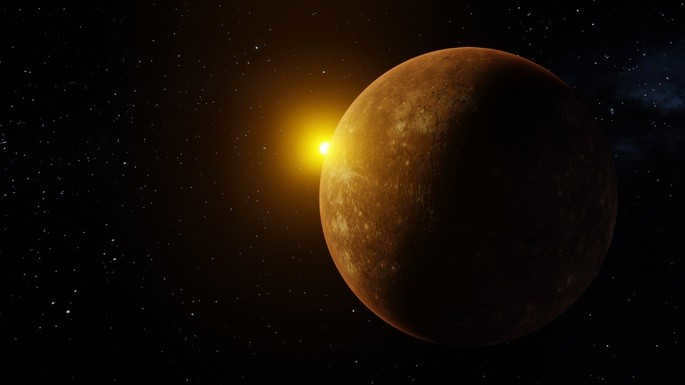
Mercury has a slow rotation on its axis, but it moves quickly around the Sun at a speed of 170 km/h. In order for Mercury to experience one sunrise and one sunset (astronomical day), it needs to complete two revolutions around the Sun.
Mercury takes 59 Earth days to complete one rotation on its axis (sideric day). However, an astronomical day on Mercury lasts 176 Earth days. The planet completes a full revolution around the Sun in just 88 Earth days.
During the day, temperatures on Mercury can exceed 400 degrees Celsius, while at night they can drop to nearly -200 degrees Celsius.
Mercury has a mass that is 0.055 times that of Earth. If an experiment were conducted and a person weighing 80 kg were sent to Mercury, they would weigh only 30 kg there. This discrepancy in weight is due to the varying masses, gravity, and sizes of the two planets.
The surface of Mercury is similar in appearance to the Moon, with a rocky terrain and numerous craters. The planet’s exosphere is composed of oxygen, sodium, hydrogen, helium, and potassium.
Venus
Venus, the second planet in our solar system, is situated approximately 108 million kilometers away from the Sun. This celestial body was named after Venus, the enchanting Roman goddess associated with love, beauty, and fertility. Interestingly, Venus has no natural satellites orbiting around it.
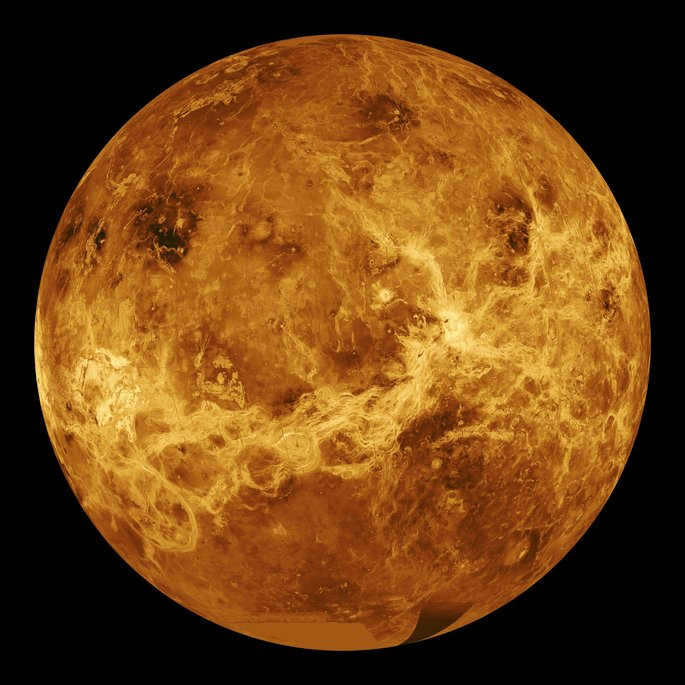
The planet’s velocity in orbit is 126 km/h. A single sideric day on Venus is equivalent to 243 Earth days. However, the sun appears to rise in the west and set in the east on Venus due to its unique opposite rotation. The length of a Venusian year is nearly 225 Earth days.
Venus maintains an extremely high surface temperature of 465 degrees Celsius above zero.
With a mass of 0.815 Earth masses, Venus is nearly identical in size to our planet. For instance, an individual weighing 80 kg on Earth would only weigh 72.5 kg on Venus.
In addition to its volcanoes and craters, Venus possesses an atmosphere that is primarily composed of carbon dioxide (97%) and nitrogen (3%).
Earth, also known as the third planet from the Sun or the blue planet, is positioned approximately 150 million kilometers from its star. The term “Earth” originates from the Anglo-Saxon word “erda,” which translates to “soil” or “earth” in modern English. Notably, Earth is orbited by a natural satellite known as the Moon.
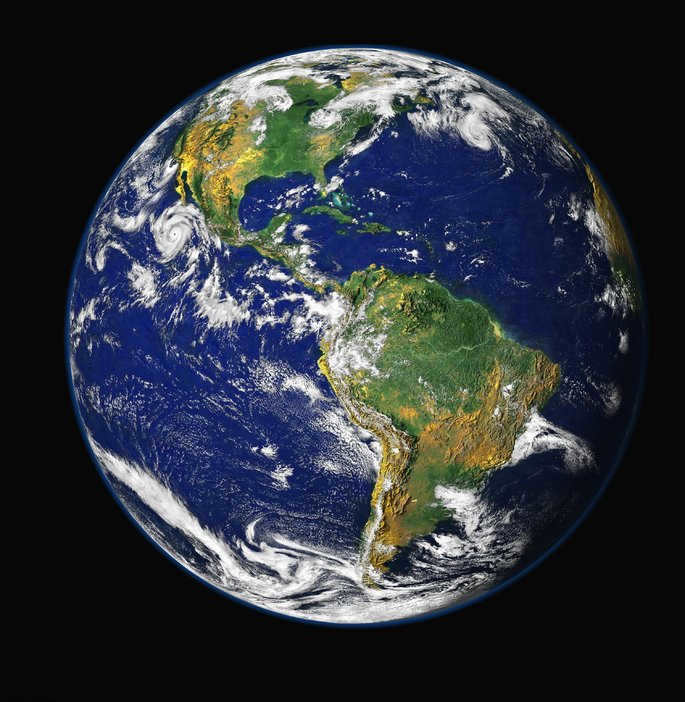
The Earth completes one orbit around the Sun every 23 hours and 56 minutes, traveling at a speed of 107 km/h.
In the Earth’s atmosphere, nitrogen makes up 78.1% of the composition, while oxygen accounts for 21%.
Mars
Mars, the fourth planet in our solar system, is located approximately 228 million kilometers away from the Sun. This red planet gets its name from the Roman god of war. In addition to its distinctive reddish appearance, Mars is also known for its two satellites, Deimos and Phobos.
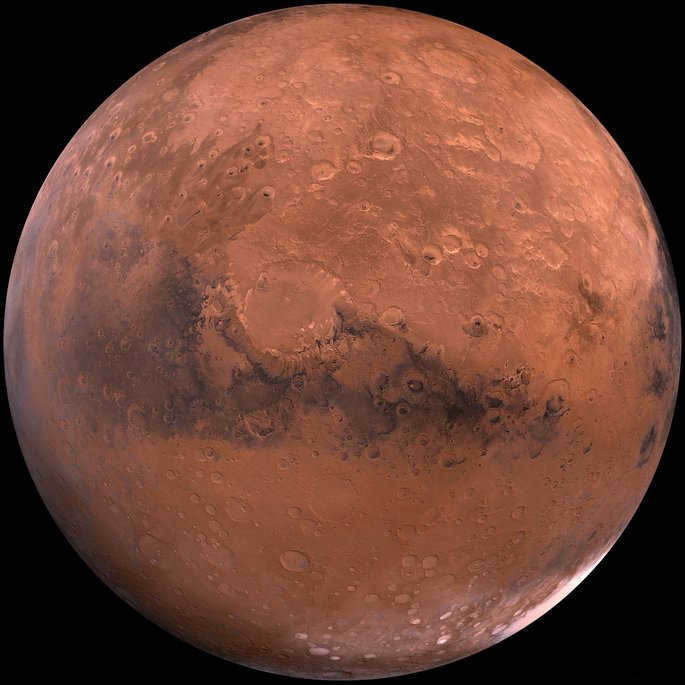
The speed at which Mars orbits the Sun is 86.6 km/h. Mars completes one full rotation on its axis in approximately the same time as Earth, which is 24.6 hours. However, it takes Mars 687 days to complete one full revolution around the Sun.
On Mars, the average temperature is -27 degrees Celsius. The planet also experiences seasons, with one season transitioning into another.
Mars is half the size of Earth. If an individual weighs 80 kilograms on Earth, they would weigh 30 kilograms on Mars.
Mars is often referred to as the red planet due to the presence of iron oxide (maghemite) on its surface. The atmosphere of Mars consists of 95% carbon dioxide, 2.5% nitrogen, and approximately 2% argon. Water is also present on Mars, but in very small quantities (up to 0.1%).
Jupiter is the fifth and most massive planet in our solar system, located at a distance of 778 million kilometers from the Sun. It was named after the ancient Roman god of thunder. This gas giant has a total of 79 satellites and is also surrounded by a faintly visible ring. Interestingly, this ring was only discovered through the use of a probe that flew near the planet.
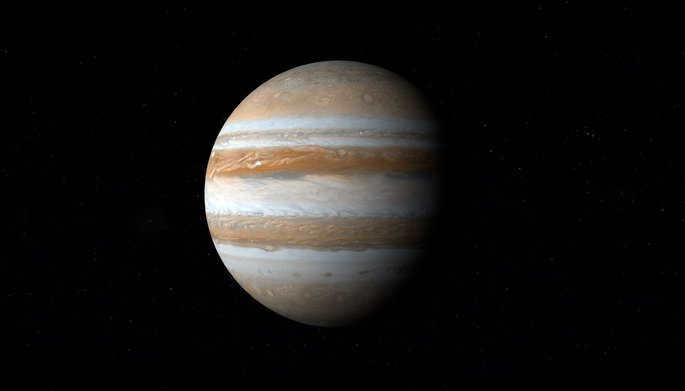
Jupiter, the largest planet in our Solar System, has a unique set of characteristics that set it apart from the other planets. With an orbital velocity of 47 km/h, it takes Jupiter 12 Earth years to complete a full orbit around the Sun.
One of the most fascinating aspects of Jupiter is its immense size and mass. In fact, Jupiter has 318 times the mass of Earth, making it a truly massive planet. To put it into perspective, an 80-kilogram man would weigh a staggering 189 kilograms on Jupiter.
What truly sets Jupiter apart is its composition. Known as a gas giant, Jupiter is primarily composed of hydrogen and helium, with a non-solid surface. This unique composition gives rise to incredible storms that rage around the planet. The most famous of these storms is the Great Red Spot, a massive storm that has been raging for over 300 years.
Saturn
The planet Saturn is located 1.4 billion kilometers away from the Sun. It derives its name from the ancient Roman deity associated with agriculture.
Saturn is known for its majestic system of seven large rings composed of ice and rock. These rings have a width of 400,000 kilometers.
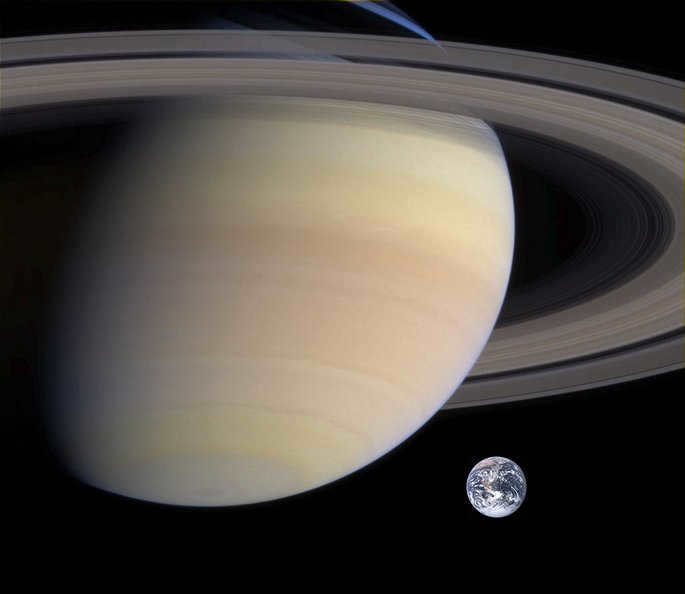
According to information from NASA, Saturn has a total of 82 officially recognized moons.
The planet’s average orbital speed is 34 kilometers per hour. In terms of Earth years, Saturn completes one orbit around the Sun in approximately 29 years. A full rotation on its axis, known as a sideric day, takes around 10 hours.
Saturn’s mass is approximately 95 times that of Earth. As a result, if an individual weighing 80 kilograms were to stand on Saturn, their weight would decrease to 73 kilograms due to the planet’s weaker gravitational force.
Similar to Jupiter, Saturn is classified as a gas giant and primarily consists of hydrogen and helium in its atmosphere.
Uranus
Uranus is the seventh planet in our solar system, situated 2.8 billion kilometers away from the Sun. It got its name from the Greek god of the sky. Interestingly, Uranus was the initial planet to be identified after the invention of the telescope.
In addition to its rings, Uranus boasts a total of 27 satellites.
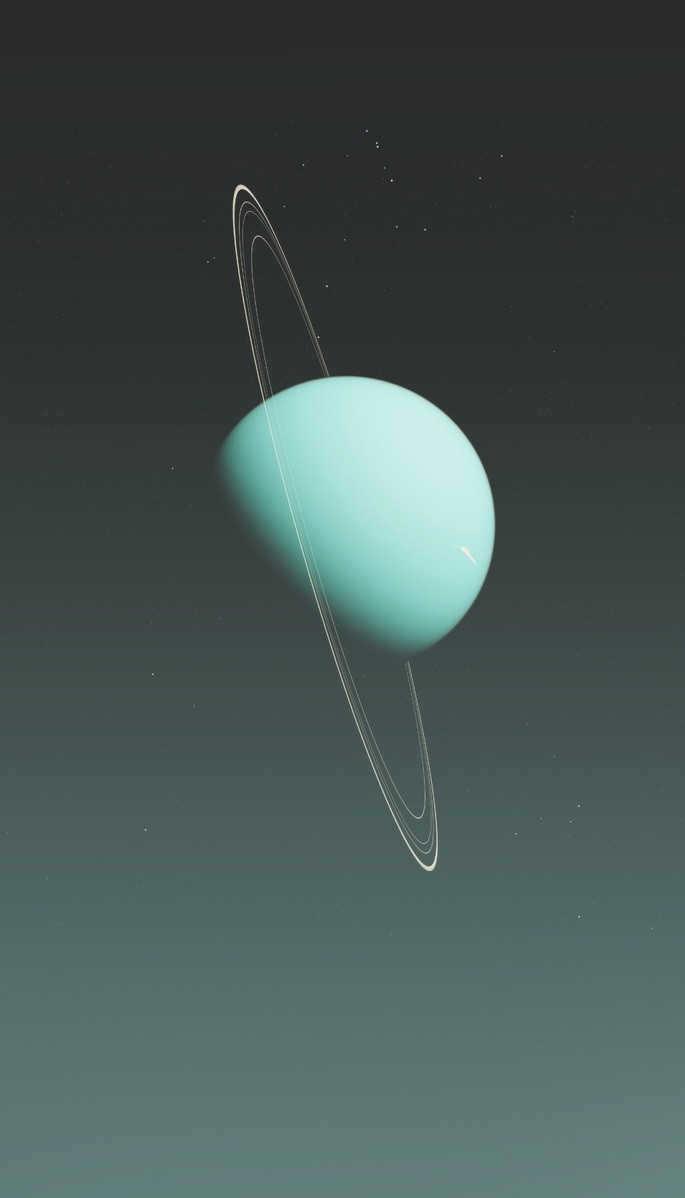
The speed at which Uranus travels in its orbit is 24 kilometers per hour. It takes 84 Earth years for Uranus to complete one orbit around the Sun. On Uranus, a day lasts for 17 hours, which is equivalent to a day on Earth.
Uranus has a mass that is 14.5 times greater than that of Earth. If an individual weighing 80 pounds were on Uranus, their weight would be 71 kilograms.
Uranus is classified as an ice giant. Its atmosphere is composed primarily of hydrogen molecules and helium atoms, with a small amount of methane present.
There is another celestial body, an ice giant and the eighth planet in our solar system. It is located approximately 4.5 billion kilometers away from the Sun. This planet is commonly known as Neptune, named after the ancient Roman god of the seas.
Neptune, apart from its mesmerizing beauty, possesses 14 satellites and majestic rings surrounding it.
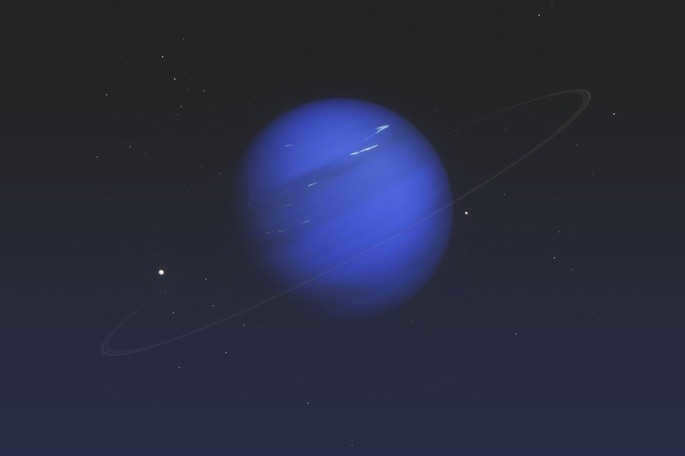
The orbital speed of Neptune is 19.5 kilometers per hour. It will take 165 Earth years for Neptune to complete one revolution around the Sun.
Neptune has a mass that is 17.2 times that of Earth. If an individual weighing 80 kilograms were on Neptune, they would weigh 90 kilograms.
Similar to Uranus, the atmosphere of Neptune consists of hydrogen molecules, helium, and methane atoms.
To learn more about the Sun, as well as the composition of the Earth’s atmosphere and what the Galaxy is, click here.
Now, let’s take a look at the order of the planets in the solar system: Mercury, Venus, Earth, Mars, Jupiter, Saturn, Uranus, and Neptune.
What defines a planet?
The International Astronomical Union (IAU) established criteria in 2006 to determine what qualifies as a planet. According to these criteria, a planet is an object that:
- orbits around the Sun;
- has enough mass to maintain a round shape due to its own gravity;
- has cleared its orbit of any other celestial bodies.

This resulted in Pluto’s failure to meet the final criterion and its subsequent reclassification as a dwarf planet. Similarly, Ceres is no longer classified as an asteroid but has now been grouped with Pluto.
However, there are also trans-Neptunian objects that fall under the category of dwarf planets and are referred to as plutoids. These are celestial bodies that orbit beyond Neptune’s orbit. Among these plutoids are Ceres, Pluto, Haumea, Erida, and Makemake.
The arrangement of the planets in our solar system
Now, let’s examine the arrangement of the planets in our solar system according to their increasing distance from the Sun.
Mercury
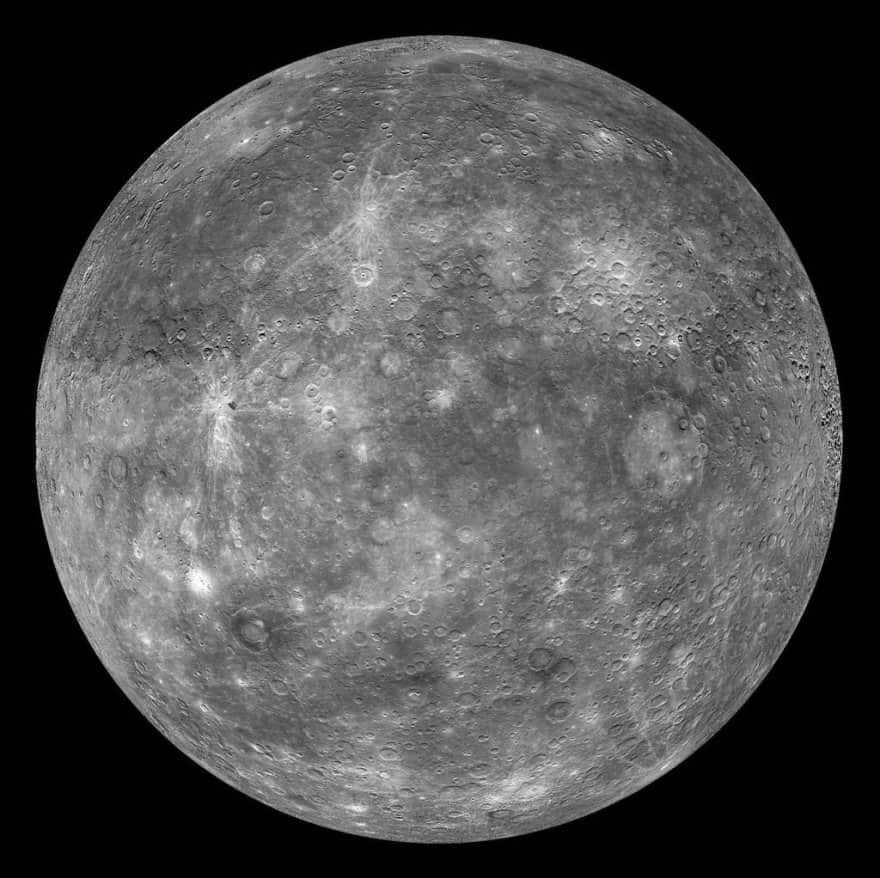
Mercury, which is situated 58 million kilometers away from the Sun, holds the distinction of being the closest planet to the Sun. However, despite its proximity to the Sun, it is not considered the hottest planet in the solar system.
One of the most striking features of Mercury is its small size, making it the second smallest planet after Ganymede, its satellite.
- Diameter: 4,879 km
- Mass: 3.3011 × 10,23 kg (0.055 Earth’s mass).
- Length of year: 87.97 days.
- Day length: 59 days.
- Mercury belongs to the category of Earth-type planets and bears a resemblance to Earth’s Moon in terms of its cratered surface.
- If your weight on Earth is 45 kg, it would be around 17 kg on Mercury.
- Mercury has no natural satellites.
- The temperatures on Mercury fluctuate between -173 to 427 °C (-279 to 801 degrees Fahrenheit).
- Only two missions have been sent to Mercury so far: the Mariner 10 in 1974-1975 and MESSENGER, which made three flybys before finally entering orbit around the planet in 2011.
Venus
Venus is the second planet from the Sun and is the second brightest natural object in the night sky after the Moon. It is named after the Roman goddess of love and beauty. Venus has similar size and composition to Earth, but it has a much thicker atmosphere, which causes a runaway greenhouse effect and makes Venus the hottest planet in our solar system. The surface of Venus is covered in thick clouds of sulfuric acid, making it impossible to see the planet’s surface from space. Venus has no moons and rotates very slowly, taking 243 Earth days to complete one rotation. It is often called Earth’s “sister planet” due to its similar size and composition, but the extreme temperatures and hostile environment on Venus make it uninhabitable for humans.

The distance between the Sun and this celestial body is 108 million kilometers, making it Earth’s sibling due to its similar parameters: 81.5% of Earth’s mass, 90% of its surface area, and 86.6% of its volume.
A skilled tarot reader will provide answers to the following inquiries:
What lies ahead in your future? How will your relationships unfold? What is the optimal course of action to take?

Venus has become the hottest planet in the solar system due to its thick atmosphere, with temperatures reaching up to 462°C.
- Diameter: 12104 km.
- Mass: 4.886 x 10,24 kg (0.815 Earth’s mass)
- Orbital period: 225 days.
- Rotation period: 243 days.
- Temperature: 462°C.
- The atmosphere is dense and toxic, composed of carbon dioxide (CO2) and nitrogen (N2) with traces of sulfuric acid (H2SO4).
- No moons.
- Venus has a retrograde rotation.
- If you weigh 45 kg on Earth, you would weigh 41 kg on Venus.
- The planet Venus is often referred to as the Morning and Evening Star due to its brightness, which surpasses that of any other celestial body in the sky. It is typically visible during dawn and dusk, leading to frequent misconceptions of it being a UFO.
- Over 40 missions have been dispatched to explore Venus. In the early 1990s, the Magellan spacecraft successfully mapped 98% of the planet’s surface.
The planet Earth
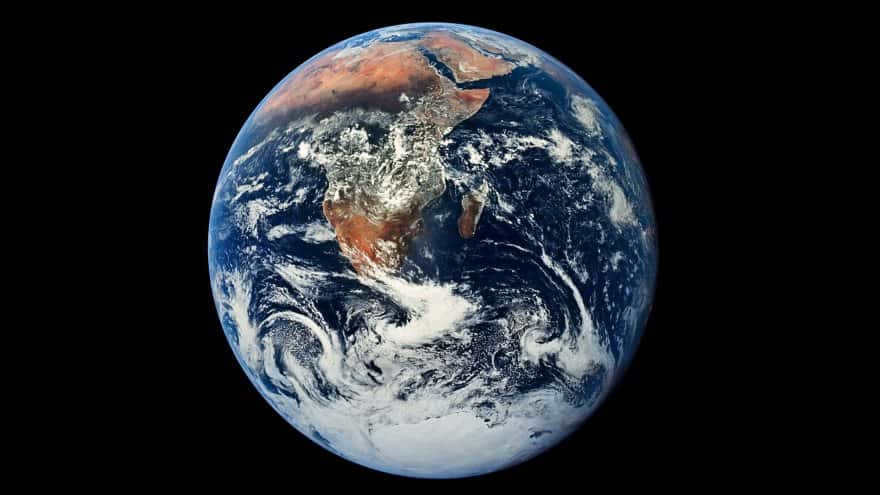
Earth is our home, located 150 million kilometers away from the star. It is currently the only known planet that sustains life.
- The Earth has a diameter of 12760 kilometers.
- Its mass is approximately 5.97 x 10,24 kilograms.
- One year on Earth is equal to 365 days.
- A day on Earth lasts for 23 hours, 56 minutes, and 4 seconds.
- The average surface temperature is -14°C, with extremes ranging from -88°C to 58°C.
- The Earth’s surface is constantly changing and approximately 70% of it is covered by oceans.
- Earth has one natural satellite.
- The composition of Earth’s atmosphere is primarily nitrogen (78%), oxygen (21%), and other gases (1%).
- Earth remains the only known planet to support life.
The Red Planet
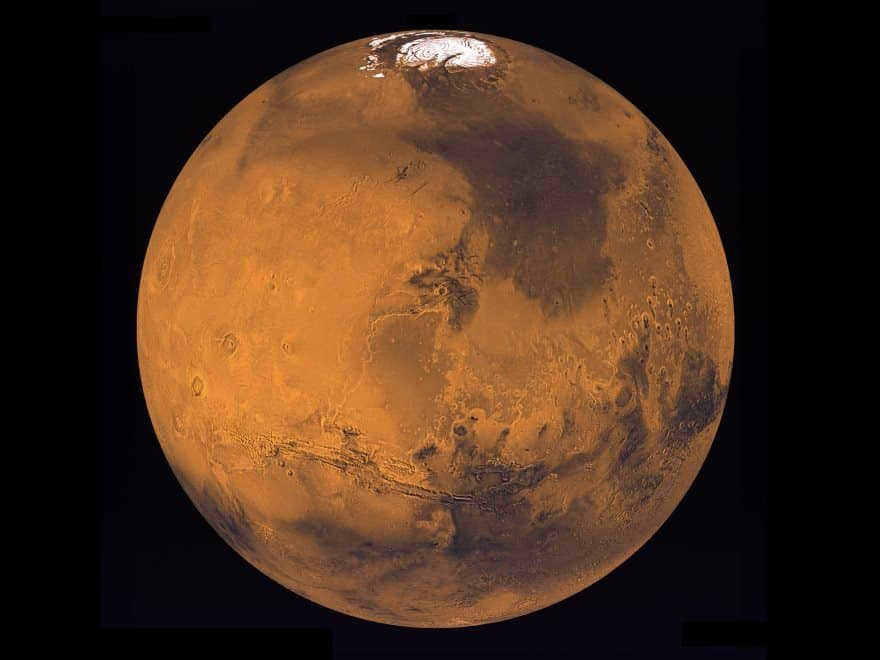
Mars, a planet located 288 million miles away from the Sun, earned its nickname due to its reddish color caused by iron oxide. The similarities between Mars and Earth include their axial rotation and tilt, which results in the formation of seasons.
Mars also has various surface features that are familiar to us, such as mountains, valleys, volcanoes, deserts, and ice caps. The atmosphere on Mars is thin, leading to temperatures dropping to -63 degrees Celsius.
- Diameter: 6787 kilometers.
- Mass: 6.4171 x 10 23 kg (0.107 times that of Earth).
- Length of year: 687 days.
- Day length: 24 hours and 37 minutes.
- Surface Temperature: The average temperature is approximately -55 degrees Celsius, with a range of -153 degrees Celsius to +20 degrees Celsius.
- Mars is classified as a terrestrial planet. Its rocky surface has experienced the effects of volcanic activity, asteroid impacts, and atmospheric phenomena such as dust storms.
- The planet’s thin atmosphere is primarily composed of carbon dioxide (CO2), nitrogen (N2), and argon (Ar). If your weight is 45 kg on Earth, it would be only 17 kg on Mars.
- Mars has two small moons, Phobos and Deimos.
- It is known as the Red Planet due to the oxidation (rusting) of iron minerals in its soil.
- Over 40 spacecraft have been launched to explore Mars.
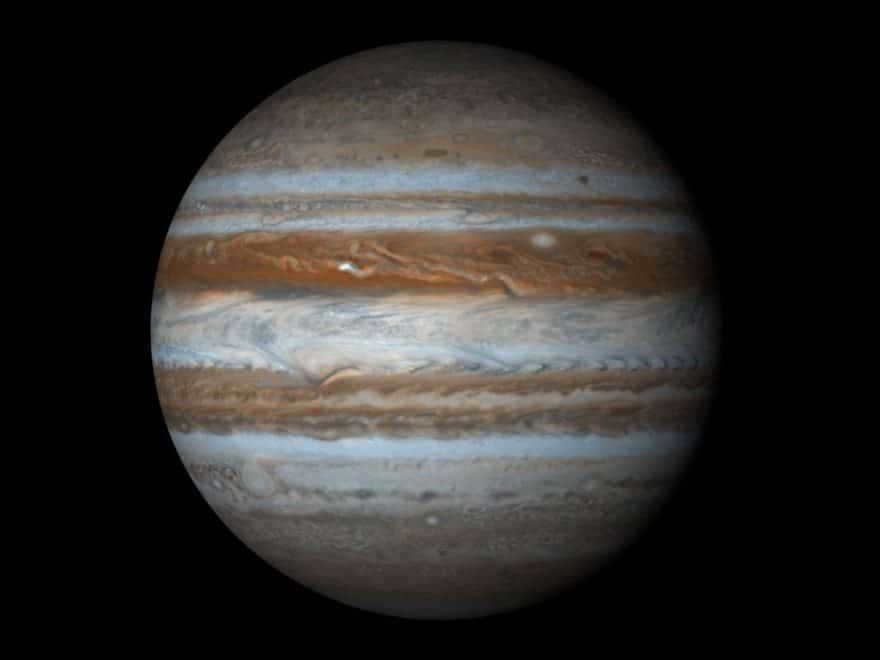
Jupiter, which is separated from the Sun by a distance of 778 million kilometers, holds the title of the largest planet in our Solar System. It dwarfs Earth by a whopping 317 times and is 2.5 times bigger than all the other planets combined. Composition-wise, Jupiter is primarily made up of hydrogen and helium.
If you’re seeking answers about your future, your relationships, or the best course of action to take, a skilled tarot reader can provide you with the guidance you need.

Jupiter has the most intense atmosphere, with wind speeds reaching up to 620 km/h. The planet is also known for its breathtaking auroras, which are almost constantly visible.
- Diameter: 428,400 kilometers.
- Mass: 1.8986 × 10 27 kilograms (317.8 times the mass of Earth).
- Year length: 11.9 years.
- Day length: 9.8 hours.
- Temperature record: -148°C.
- Jupiter has 67 confirmed satellites, with another 17 moons awaiting confirmation. It’s like a mini solar system!
- In 1979, Voyager 1 discovered a faint ring system around Jupiter.
- If you weigh 45 kg on Earth, you would weigh 115 kg on Jupiter.
- The Great Red Spot is an enormous storm (larger than Earth) that has been raging continuously for hundreds of years. It has experienced a downward trend in recent years.
- There have been numerous missions that have flown past Jupiter. The most recent one, Juno, arrived in 2016.
Saturn

Situated at a distance of 1.4 billion kilometers, Saturn is a massive gas planet that boasts a magnificent ring system. The planet is comprised of layers of gas that encircle a solid core.
- Diameter: 120,500 kilometers.
- Mass: 5.66836 × 10 26 kilograms (equivalent to 95.159 times the mass of Earth).
- Orbital period: 29.5 years.
- Rotation period: 10.7 hours.
- Temperature: -178 degrees Celsius.
- Atmospheric composition: primarily hydrogen (H2) and helium (He).
- If your weight on Earth is 45 kilograms, it would be approximately 48 kilograms on Saturn.
- Saturn has a total of 53 confirmed moons, with an additional 9 awaiting confirmation.
- There have been a total of 5 missions sent to explore Saturn, with the Cassini mission launching in 2004 and continuing to study the planet and its system.
Uranus
Rephrase the text, making it unique, using the English language and preserving the HTML markup:
Uranus
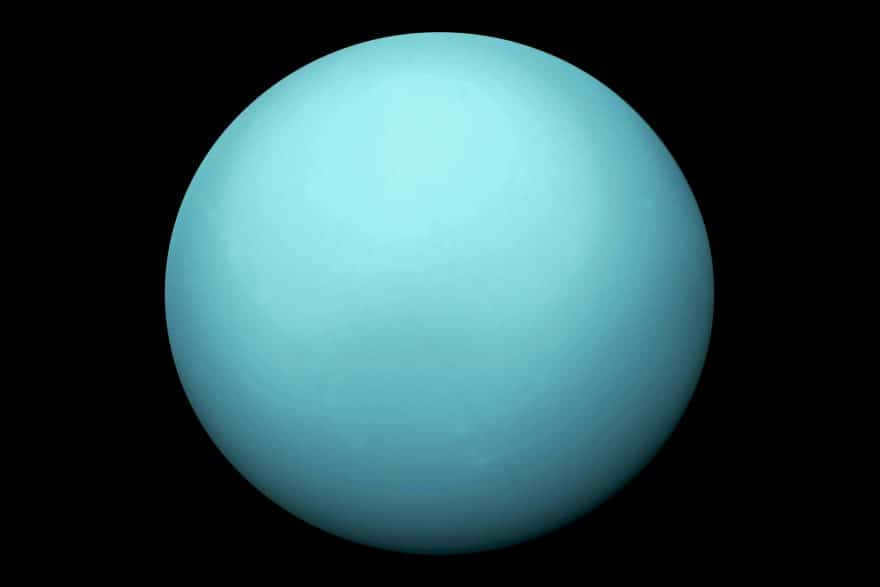
Residing at a distance of 2.9 billion kilometers, Uranus is classified as an ice giant due to its abundance of ammonia, methane, water, and hydrocarbons. The presence of methane also gives the planet its distinctive blue appearance.
Uranus is known for its extreme cold temperatures, making it the frostiest planet in the solar system. Its seasonal cycle is quite peculiar, lasting 42 years for each hemisphere.
- Diameter: 51120 kilometers.
- Year length: 84 years.
- Day length: 18 hours.
- Temperature: -216°C.
- The majority of Uranus’ mass is composed of a dense liquid made up of “icy” substances like water, ammonia, and methane.
- The planet’s atmosphere primarily consists of hydrogen and helium, with a small amount of methane. This methane is responsible for the blue-green tint observed on Uranus.
- If you weigh 45 kg on Earth, your weight on Uranus would be approximately 41 kg.
- Neptune has a relatively weak ring system.
- A spacecraft called Voyager 2 was specifically sent to explore the planet.
Neptune
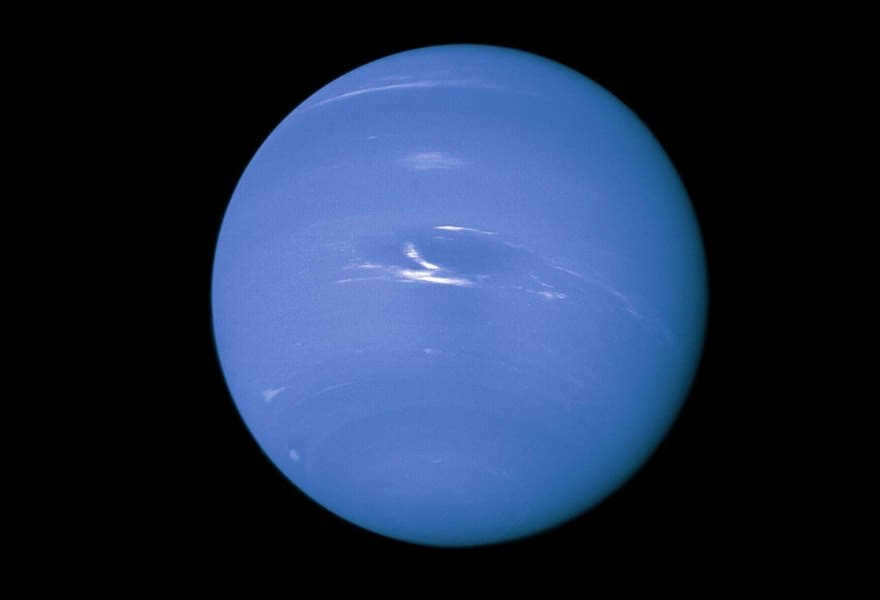
Neptune, situated 4.5 billion kilometers away from the Sun, stands as the final recognized planet in our solar system. It is categorized as one of the ice giants.
Due to its great distance, Neptune cannot be observed without the aid of telescopes. In-depth imagery was captured during the flyby of its sole mission, Voyager 2. This planet possesses satellites and a relatively feeble ring system.
- Diameter: 49530 kilometers.
- Mass: 1.0243 x 10 26 kg (17 times that of Earth).
- Year length: 165 years.
- Day length: 16 hours.
- Record low temperature: -214°C.
- The composition of this celestial body consists of luminous water, ammonia, and methane.
- Atmospheric composition: hydrogen, helium, and methane.
- There have been confirmed 13 satellites and 1 more that is currently awaiting a verdict.
- The ring system consists of 6 formations.
- If you weigh 45 kg on Earth, your weight would be 52 kg on Neptune.
- The planet’s position was determined through mathematical calculations.
- Only Voyager 2 has made a journey to Neptune.
- Interesting facts about planets:
- The smallest planet in the solar system;
- The largest planet in the solar system;
- The most distant planet from the sun;
- The planet closest to Earth;
- The hottest planet in the solar system;
- The orbits of planets;
- The dimensions of planets;
- The diameter of planets;
- The total number of planets in the solar system;
- The order of planets in the solar system;
- Former planets in the solar system;
There are a total of eight planets in the solar system, which include Mercury, Venus, Mars, Earth, Jupiter, Saturn, Uranus, and Neptune. The first four planets, Mercury, Venus, Mars, and Earth, are part of the inner solar system and are commonly referred to as terrestrial planets. On the other hand, Jupiter and Saturn are known as gas giants due to their large size and composition, consisting mainly of hydrogen and helium. Uranus and Neptune, on the other hand, are classified as ice giants because of their larger size and composition, which includes heavier elements.
In the past, Pluto was considered the ninth planet in our solar system. However, in 2006, it was reclassified as a dwarf planet. Clyde Tombaugh was the first to discover this dwarf planet, which is now recognized as one of the largest objects in the Kuiper Belt. The Kuiper Belt is a collection of icy bodies located on the outer edge of our solar system. The reclassification of Pluto as a dwarf planet came after the International Astronomical Union (IAU) revised their definition of what constitutes a planet.

Based on the IAU decision, a celestial body is considered a planet of the solar system if it orbits the Sun, has sufficient mass to form a spherical shape, and is capable of clearing its orbit of any debris. Unfortunately, Pluto did not meet the criteria for the last requirement, leading to its classification as a dwarf planet. Other celestial bodies that fall into this category include Ceres, Makemake, Haumea, and Eridu.
Despite being classified as a dwarf planet, Pluto is still a fascinating and unique celestial body. It has a thin atmosphere, rugged surface features, and a system of five satellites, making it one of the most intriguing objects in our solar system.
However, scientists remain optimistic about the discovery of the enigmatic Ninth Planet, also known as Planet X, despite their announcement in 2016 of a theoretical celestial body that exerts gravitational influence on objects in the Kuiper Belt. This enigmatic planet boasts a mass ten times that of Earth and a staggering 5,000 times the mass of Pluto. Presented below is a compilation of the Solar System’s planets, complete with captivating photographs, names, vivid descriptions, intricate characteristics, and intriguing facts designed to captivate both children and adults alike.
Comparison table of planets in our solar system
| Mercury | 0.382 | 0.06 | 0.38 | 0.241 | 58.6 | 5427 | none |
| Venus | 0.949 | 0.82 | 0.72 | 0.615 | 243 | 5243 | no |
| Earth | 1.0 | 5515 | 1 | ||||
| Mars | 0.53 | 0.11 | 1.52 | 1.88 | 1.03 | 3933 | 2 |
| Ceres | 0.074 | 0.000013 | 2.76 | 4.6 | 0.46 | ~2000 | no |
| Jupiter | 11.2 | 318 | 5.20 | 11.86 | 0.414 | 1326 | 67 |
| Saturn | 9.41 | 95 | 9.54 | 29.46 | 0.426 | 687 | 62 |
| Uranus | 3.98 | 14.6 | 19.22 | 84.01 | 0.718 | 1270 | 27 |
| Neptune | 3.81 | 17.2 | 30.06 | 164.79 | 0.671 | 1638 | 14 |
| Pluto | 0.098 | 0.0017 | 39.2 | 248.09 | 6.3 | 2203 | 5 |
| Haumea | 0.032 | 0.00066 | 42.1 | 281.1 | 0.03 | ~1900 | 2 |
| Makemake | 0.033 | 0.00065 | 45.2 | 306.28 | 1.9 | ~1700 | no |
| Erida | 0.1 | 0.0019 | 68.03 | 561.34 | 1.1 | ~2400 | 1 |
An expert in tarot readings will provide answers to your queries:
What lies ahead in your future? How will your relationships unfold? What course of action should you take?

Planets of the solar system closest to the Sun
These terrestrial planets, including Mercury, Venus, Earth, and Mars, have rocky surfaces. Additionally, Pluto, although classified as a dwarf planet, also has a solid, frozen surface layer.
Mercury
Venus
Earth
Mars
Gas giant planets of the solar system
There are four massive gas giants located in the outer regions of the solar system due to their substantial size and gaseous composition. However, Uranus and Neptune differ from the others as they contain a larger amount of ice, leading to their classification as “ice giants.” Nevertheless, all gas giants share a common characteristic: they are primarily comprised of hydrogen and helium.
Jupiter
can be paraphrased as follows:
The planet Jupiter
.
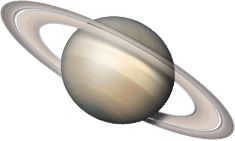
Saturn
Uranus
Neptune
The small celestial bodies of the solar system
The International Astronomical Union (IAU) has established a definition for a planet:
- An object must orbit around the Sun;
- Have enough mass to become spherical;
- Clean up its orbit from other celestial bodies;
Pluto did not meet the last requirement, as it shares its orbit with a large number of Kuiper Belt objects. However, not everyone agreed with this definition. As a result, small celestial bodies like Eris, Haumea, and Makemake came into play.
Another celestial body that can be found between Mars and Jupiter is Ceres. It was first observed in 1801 and initially classified as a planet. To this day, some still recognize it as the 10th planet in our solar system.
The dwarf planets within our solar system
Pluto
Ceres
Makemake
Erida
Haumea
Order of the Planets in the Solar System
Below are the distinctive features of the 8 primary planets in the solar system, listed according to their order from the Sun:
Mercury: The Closest Planet to the Sun

Mercury, the initial planet from the Sun, revolves in an elliptical path at a distance of 46-70 million kilometers from the Sun. It completes one orbit in 88 days and completes one axial rotation in 59 days. Due to its slow rotation, a day on Mercury lasts for 176 Earth days. The axial tilt of Mercury is extremely minimal.
With a diameter of 4887 km, Mercury, the closest planet to the Sun, has only 5% of Earth’s mass. The surface gravity on Mercury is one-third of Earth’s gravity. The planet lacks a significant atmosphere, resulting in scorching temperatures during the day and freezing temperatures at night. The temperature on Mercury fluctuates between +430°C and -180°C.
A skilled tarot reader can provide insights into the future, relationships, and decision-making.
What does the future hold for you? How will your relationships unfold? What is the right solution?

Mercury possesses a highly cratered surface and an iron core. However, its magnetic field is not as strong as Earth’s. Originally, radar readings suggested the existence of water ice at the poles. The Messenger spacecraft confirmed these assumptions and discovered ice deposits at the bottoms of the craters, which are constantly in shadow.
The closest planet to the Sun, Mercury can be observed before sunrise and just after sunset.
- Discovery: it was observed by ancient civilizations without the use of instruments.
- Name: it is named after the messenger of the gods in the Roman pantheon.
- Diameter: 4878 kilometers.
- Orbit: 88 days.
- Day length: 58.6 days.
Venus: The Solar System’s Second Planet


Venus, the second planet from the Sun, follows an almost circular path at a distance of 108 million km. It is the closest planet to Earth and can come as close as 40 million kilometers.
Venus completes its orbital journey in 225 days, while a full rotation on its axis (in a clockwise direction) takes 243 days. A single day on Venus lasts for 117 Earth days. The planet has an axial tilt of 3 degrees.
The surface of Venus, the second planet from the Sun, remains concealed from direct observation, although scientists have successfully constructed a comprehensive map utilizing radar technology. Venus’ surface is characterized by expansive volcanic plains and two massive continents, along with towering mountains and deep valleys. Additionally, impact craters are present on the planet’s surface. Notably, Venus exhibits a weak magnetic field.
- Detection: Early astronomers were able to observe Venus without the aid of instruments.
- Name: Venus derives its name from the Roman goddess associated with love and beauty.
- Diameter: Venus has a diameter of 12,104 kilometers.
- Orbit: Venus completes one orbit around the Sun in approximately 225 days.
- Day length: A Venusian day lasts approximately 241 Earth days.
Earth is the third planet in our solar system, located closest to the Sun


Earth, which is the third planet from the Sun, is the largest and most dense among the inner planets. Its distance from the Sun is approximately 150 million kilometers. In addition, Earth has one natural satellite and is known for its advanced life forms.
The orbital period of Earth is 365.25 days, while its axial rotation takes about 23 hours, 56 minutes, and 4 seconds. A day on Earth lasts for 24 hours. Furthermore, Earth has an axial tilt of 23.4 degrees and a diameter of 12,742 kilometers.
The Earth, which is the third planet from the Sun, was formed approximately 4.54 billion years ago. Throughout its existence, it has been accompanied by the Moon, which is believed to have formed when a massive object collided with the Earth, causing material to be thrown into orbit. The Moon plays a crucial role in stabilizing the Earth’s axial tilt and is also responsible for the formation of tides.
Measuring 3747 km in diameter, the Moon is about 27% the size of the Earth. It orbits at a distance of 362,000-405,000 km from the Earth and experiences the gravitational influence of the planet. This gravitational pull has caused the Moon to slow down its axial rotation and become tidally locked, meaning that one side of the Moon is always facing the Earth.
The Earth is protected from stellar radiation by a strong magnetic field, which is generated by its active core made of molten iron.
Mars is the planet that is fourth in order from the Sun

Mars is the fourth celestial body in our solar system, positioned at a distance of approximately 230 million kilometers from the Sun. The red planet follows an elliptical orbit around the Sun, completing one revolution every 686 days. Similar to Earth, Mars experiences axial rotation, with a day lasting approximately 24 hours and 37 minutes. Its axial tilt is 25.1 degrees, allowing for the occurrence of seasons.
In terms of size, Mars has a diameter of 6792 kilometers, which is half the size of Earth. Its mass is about 1/10th that of Earth. The gravity on Mars is approximately 37% of Earth’s.
Unlike Earth, Mars lacks a protective magnetic field, which has resulted in the erosion of its original atmosphere by the solar wind. Scientific instruments have detected the escape of atoms into space. Consequently, the atmospheric pressure on Mars is only 1% of Earth’s pressure, and the thin atmosphere is composed of 95% carbon dioxide.
An experienced tarot reader will provide answers to the following inquiries:
What does the future hold for you? How will your relationships unfold? What is the optimal course of action?

Mars, the fourth planet from the Sun, experiences extreme cold temperatures, dropping to -87°C in winter and rising to -5°C in summer. It is known for its dusty surface and giant storms that have the ability to cover the entire planet.
- Discovery: Mars was observed by the ancients without the use of instruments.
- Name: Mars is named after the god of war in Roman mythology.
- Diameter: Mars has a diameter of 6787 kilometers.
- Orbit: Mars completes one orbit around the Sun in 687 days.
- Day length: A day on Mars is approximately 24 hours and 37 minutes long.
Jupiter is the planet that is fifth in order from the Sun.

Jupiter, the fifth planet in our solar system, is also the largest planet. It has a mass that is 2.5 times greater than all the other planets combined and accounts for 1/1000 of the total mass of the solar system.
Located 780 million kilometers away from the Sun, Jupiter takes approximately 12 years to complete one orbit. Its composition is primarily made up of hydrogen (75%) and helium (24%), with a possible rocky core surrounded by liquid metallic hydrogen, which gives it a diameter of 110,000 kilometers. The overall diameter of the planet is 142,984 kilometers.
In the upper atmosphere of Jupiter, there are clouds that extend up to 50 kilometers in height, composed of ammonia crystals. These clouds form distinct bands that move at different speeds and latitudes. One of the most notable features on Jupiter is the Great Red Spot, a massive storm.
Jupiter rotates on its axis at an incredible speed, completing one revolution in just 10 hours. This rapid rotation causes the equatorial diameter of the planet to be 9,000 kilometers larger than the polar diameter.
- Observation: the ancients had visual perception without the utilization of tools.
- Designation: the primary deity in the Roman pantheon.
- Size: 139822 km in diameter.
- Revolution: 11.9 years to complete one orbit around the Sun.
- Rotation: 9.8 hours for a single day on Saturn.
Saturn is positioned as the sixth planet from the Sun.


Saturn, known as the 6th planet from the Sun, holds the title of being the second largest planet in our Solar System. It surpasses the radius of Earth by a factor of 9, measuring 57,000 km, and boasts a mass that is 95 times greater.
Sitting at a distance of 1.4 billion kilometers from the Sun, Saturn completes one orbit every 29 years. Its composition consists of 96% hydrogen and 3% helium. Some scientists speculate that there may be a rocky core encased in a layer of liquid metallic hydrogen, with a diameter of 56,000 km. The outer layers are made up of liquid water, hydrogen, ammonium hydrosulfide, and helium.
The core of Saturn reaches temperatures of up to 11,700°C, generating more heat than the planet receives from the Sun. As one ascends through its atmosphere, the temperature gradually decreases. At the highest altitudes, the temperature drops to a chilly -180°C, while just 350 kilometers below the surface, it stabilizes at 0°C.
The cloud formations on the sixth planet from the Sun bear a resemblance to those on Jupiter, although they appear fainter and wider. One notable feature is the occurrence of the Great White Spot, a periodic storm that occurs briefly. The planet completes an axial revolution in approximately 10 hours and 39 minutes, although it is challenging to determine an exact figure due to the absence of fixed surface features.
- Detection: The ancients were able to observe the planet without the aid of instruments.
- Name: The planet is named after the god of the household in the Roman pantheon.
- Diameter: The planet has a diameter of 120,500 kilometers.
- Orbit: The planet completes an orbit around the Sun in 29.45 days.
- Duration of the day: A day on the planet lasts approximately 10.5 hours.
Uranus: The Solar System’s Seventh Planet


Uranus, known as one of the ice giants, is positioned as the seventh planet from the Sun. In terms of size, it ranks third among the planets in the Solar System. With a diameter of 50,000 km, Uranus is four times larger than Earth and has a mass 14 times greater.
Uranus is located at a distance of 2,900 million kilometers from the Sun and completes its orbit every 84 years. What makes it truly unique is its extreme axial tilt of 97 degrees, causing the planet to essentially spin on its side.
- Neptune was discovered in 1781 by William Herschel.
- Neptune is known as the personification of the sky.
- The diameter of Neptune is 51120 km.
- Neptune has an orbit of 84 years.
- A day on Neptune lasts for 18 hours.
Neptune is the eighth planet from the Sun.


Neptune, which is located 4,500 million kilometers away from the Sun, is officially recognized as the eighth planet in our solar system. It has a diameter of 49000 km and is 17 times more massive than Earth.
Due to its vast distance from the Sun, Neptune only receives 1% of the solar illumination that Earth receives. It takes Neptune 165 years to complete one orbit around the Sun and it has an axial tilt of 28 degrees. Additionally, it takes Neptune 16 hours to complete one revolution on its axis.
Compared to Uranus, Neptune experiences more pronounced meteorological phenomena. Powerful storm features, in the form of dark spots, can be observed at the planet’s poles. The winds on Neptune can accelerate to speeds of 600 m/s and the temperature drops to -220°C. The core of Neptune warms up to a scorching 5200°C.
- Discovered in 1846.
- Called after the Roman deity of water.
- Has a diameter of 49530 kilometers.
- Takes 165 years to orbit the Sun.
- A day on Neptune lasts 19 hours.
Neptune.
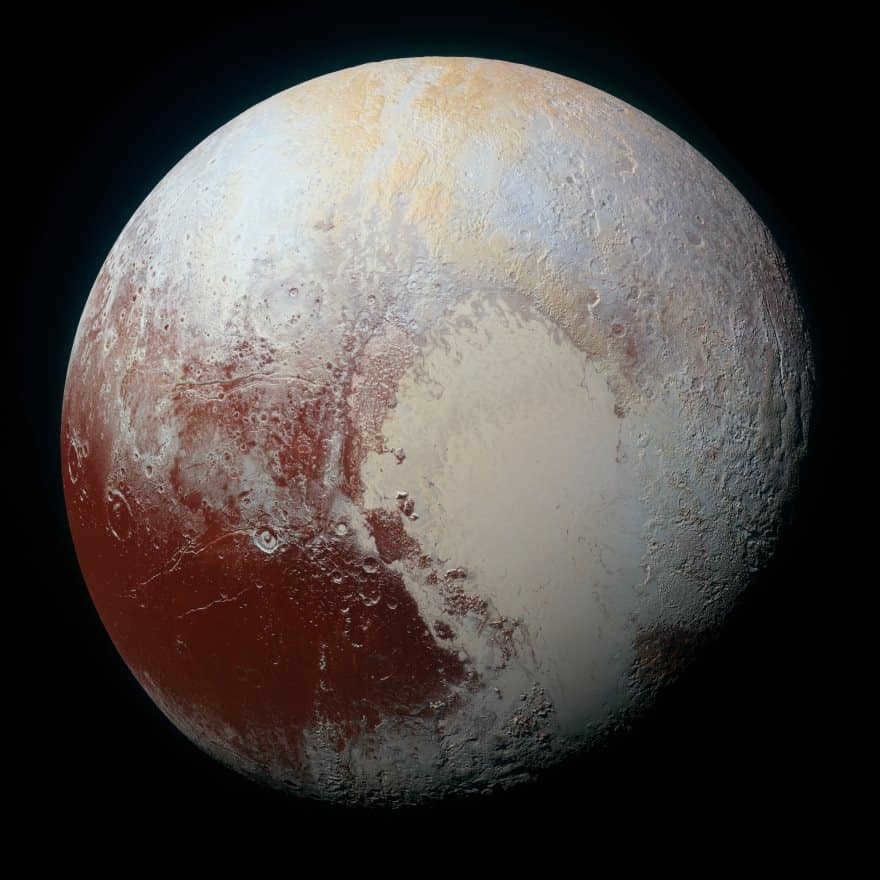
Pluto, a celestial body smaller than its Earth-like counterpart, shares its orbit with Neptune and was considered the 8th farthest planet from the Sun between 1979 and 1999. It will remain beyond Neptune’s orbit for over two centuries. The inclination of its orbital path to the plane of the system is 17.1 degrees. In 2015, New Horizons spacecraft made a visit to this icy realm.
- Discovery: 1930 – Clyde Tombaugh.
- Name: Derived from the Roman god of the underworld.
- Diameter: 2,301 kilometers.
- Orbit: Takes approximately 248 years.
- Day length: Lasts about 6.4 days.
The planet that comes after the eighth planet
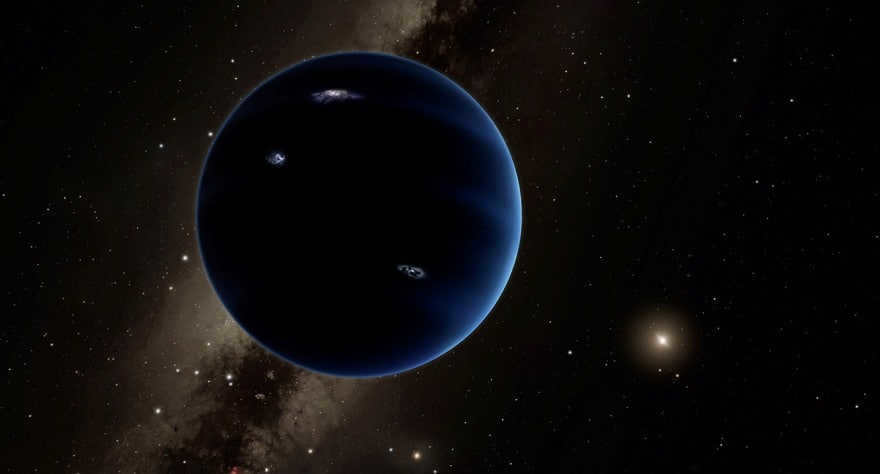
The hypothetical ninth planet is located in the outer region of the solar system and is believed to have a significant gravitational pull that can account for the behavior of trans-Neptunian objects.
Chad Trujillo and Scott Sheppard first announced the potential existence of this planet in 2014, and their theory received further support from Konstantin Batygin and Michael Brown in 2016. It is predicted that this object would have a mass equivalent to 10 Earths and an orbital period of 15,000 years.
Despite extensive efforts, the ninth planet has not yet been discovered, primarily due to its presumed distance from Earth. While the theory has gained many supporters, there are also skeptical individuals who propose alternative explanations. Explore our website to find fascinating information about the planets in our solar system, suitable for both children and adults.
- Discover intriguing facts about the planets;
- The biggest planet;
- The planet that is farthest away;
- The planet closest to Earth;
- The planet with the highest temperature;
- The paths of the planets around the sun;
- The sizes of the planets;
- The diameters of the planets;
- The number of planets in the solar system;
- The order of the planets;
- The planets that used to be part of the solar system;
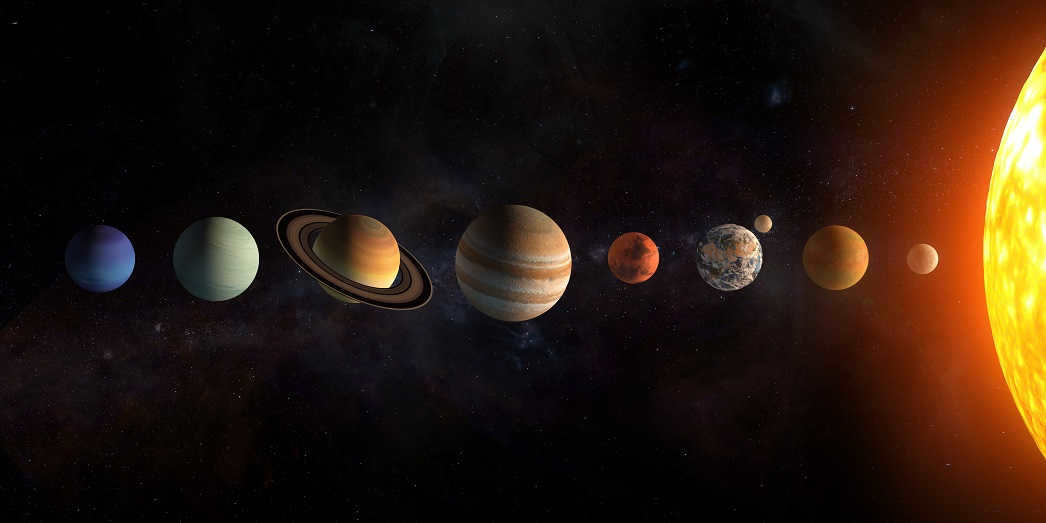
The sky, with its sun, moon, and clouds, always captivates our attention. It is particularly fascinating at night, when the entire expanse above us is adorned with numerous shining dots, varying in size and forming different shapes. Kids can easily spot the “dipper” in the sky (which is actually the Big Dipper constellation made up of four visible “stars”), as well as Sirius, Jupiter, Venus, and other bright stars. They often have questions about the Milky Way and the Moon.
Indeed, outer space is an incredibly intriguing subject that captivates us with its vastness and enigma. Children are eager to hear stories about the planets in our solar system. However, it is important to clarify the terminology from the start to avoid any confusion.
The Sun and the Solar System
We are all familiar with the appearance of the Sun: a massive, scorching orb emitting radiant light. And in this instance, our perception is accurate: The Sun, akin to its stellar counterparts, is an immense sphere comprised of gaseous matter that combusts and provides heat to its surroundings.
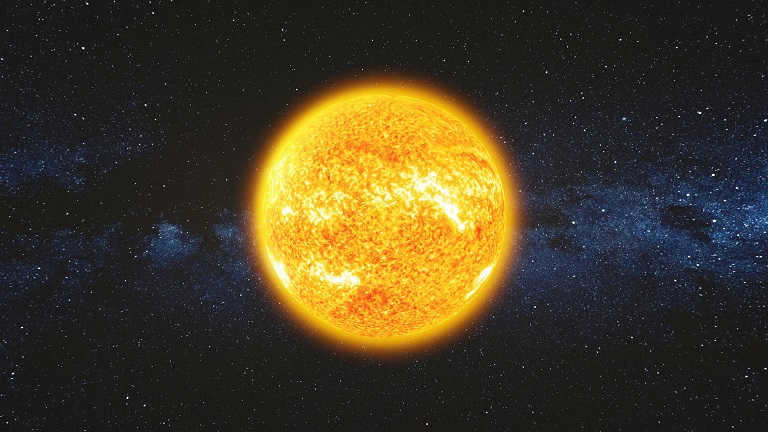
Thankfully, the Earth is situated at a significant distance away from our star. Why is this fortunate? Well, if it happened to be closer, life on our planet would be nonexistent as everything would simply be incinerated by the intense heat emitted by the Sun. Conversely, if it were positioned too far away, all living organisms would perish due to the extreme cold. Therefore, we are incredibly fortunate to have the perfect distance from the Sun.
Describing the magnitude of the Sun is a futile exercise – comprehending such immense proportions is a challenge even for an adult. How can one truly grasp its enormity? One way to illustrate its size is by comparing it to the Earth, which it surpasses by 109 times (the same Earth that harbors cities, countries, oceans, and deserts; the same Earth where it takes more than a day to traverse from one country to another by airplane). This comparison is akin to contrasting a soccer ball with a pinhead. And yet, this colossal Sun that graces our sky is still minuscule in the grand scheme of things. It is unimaginably distant.
The Sun is not the lone star in the vast expanse of the Universe. The number of suns remains unknown. Despite centuries of astronomical exploration and the utilization of powerful instruments such as telescopes and other advanced equipment, the answer to these questions eludes scientists.
The Solar System is centered around the Sun, with eight planets orbiting it, including our home planet, Earth. Each of these planets has its own unique composition, size, and orbit, resulting in a diverse celestial dance.
Not only do the planets revolve around the Sun, but they also rotate on their own axis. This intricate rotation is responsible for the changing seasons and times of day. On Earth, a calendar year lasts 365 days, signifying one revolution around the Sun. Additionally, our planet completes one rotation around its axis in 24 hours, resulting in a 24-hour day. However, other planets experience different time frames. The farther a planet is from the Sun, the longer its year will be.
The planets’ names reflect their diversity, as seen in the ancient Roman names given in honor of their gods. However, throughout history, different cultures had their own unique names for the planets. What’s fascinating is that the Romans named the planets of our solar system not arbitrarily, but rather based on their distinct characteristics and appearances.
Mercury
The planet closest to the Sun is Mercury. It is relatively small and has a rapid orbit, completing its revolution around the Sun faster than any other planet. This is why it was given the name Mercury, after the Roman deity associated with commerce and known for its swiftness.
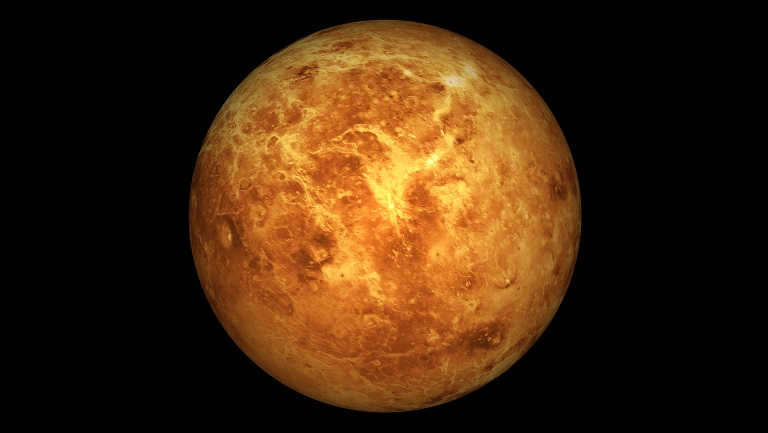

A year on Mercury only lasts for 88 days. However, the day on Mercury is incredibly long, lasting over 58 days. As a result, this planet rotates around its axis very slowly. This slow rotation leads to a significant temperature difference between the “day” and “night” sides of Mercury. The side facing the Sun can reach scorching temperatures of 427 degrees, while the other side cools down to -193 degrees.
Another notable feature of Mercury is its lack of atmosphere. Unlike most planets in the solar system, Mercury does not have a gas cloud surrounding it. This absence of atmosphere prevents temperature fluctuations from being moderated, resulting in extremely hot “summers” and freezing “winters”. These extreme conditions make it impossible for any form of life to exist on Mercury.
This celestial body is positioned between Mercury and Earth in terms of its proximity to the Sun. It possesses a remarkable radiance and splendor, rendering it visible even during daylight hours and without the assistance of a telescope. As a result of this captivating spectacle, it has been affectionately dubbed the Morning Star.
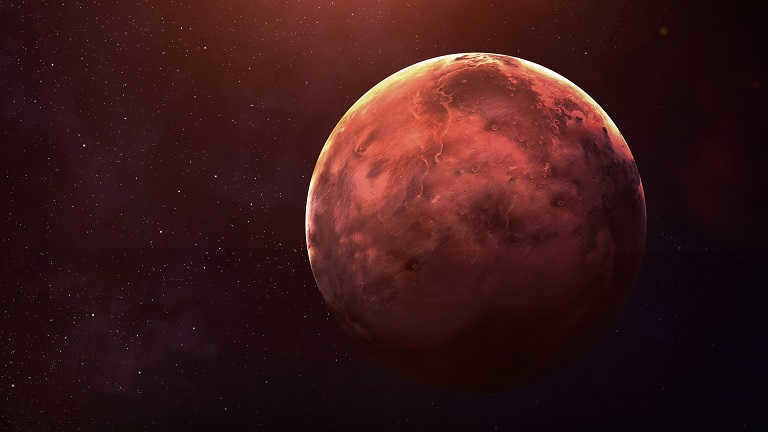
The planet Venus was given its name in honor of the ancient Roman goddess associated with love and beauty.
Venus has frequently been referred to as Earth’s twin due to its similar size and mass, leading to speculation about the possibility of life existing on the planet. However, this theory has been disproven as Venus is too hot, with temperatures reaching approximately 450 degrees Celsius. In fact, Venus is the hottest planet in our solar system. Additionally, its atmosphere lacks sufficient oxygen, making it impossible for life as we know it to survive. The entire planet is enveloped in toxic clouds of carbon dioxide. Humans would not be able to survive in these conditions, and there are no indications of any other forms of life on Venus.
A year on Venus lasts 224 Earth days, but unlike on Earth, there are no cold winters or changing seasons. Instead, Venus experiences a perpetually hot summer.
By the way, Venus is the only planet in the solar system that moves in the opposite direction compared to the rest of the planets.
The Planet Earth
The planet Earth, which is our home, is the third closest to the Sun and the fifth largest in size.
Have you ever wondered why the Earth is not named after a god like the other planets? Well, in ancient times, people believed that the Earth was the center of the universe and that all other celestial bodies revolved around it. They considered the Earth to be separate from the heavens. That’s why its name translates from Anglo-Saxon as “of the ground”. The name “Earth” in English has been used since 1400.
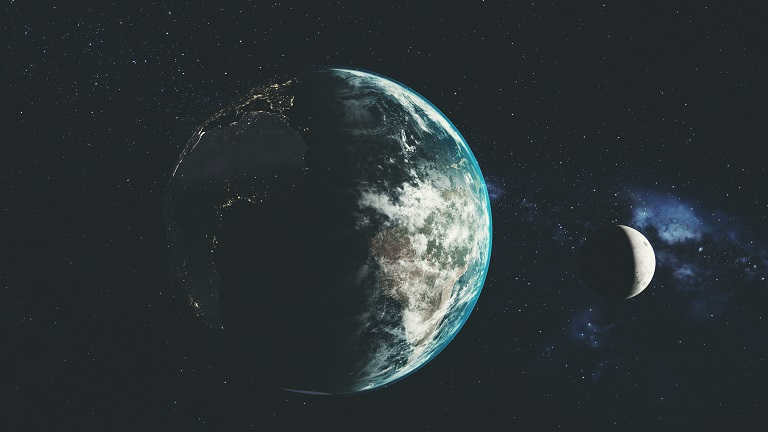
Undoubtedly, our knowledge of the Earth surpasses that of all other planets in our Solar System. However, there are still countless enigmas waiting to be unraveled.
The Earth’s closest celestial neighbor is its natural satellite, the Moon. Positioned at an ideal distance from our planet, it has provided us with invaluable research opportunities. As a result, we have amassed a wealth of information about the Moon, including samples of lunar soil, data on its atmosphere, and even photographs of its mysterious far side (as the Moon always faces the Earth with the same side). Furthermore, the Moon stands out as the only celestial body to have been touched by human beings. It was American astronaut Neil Armstrong who took the historic first steps on the Moon’s surface on July 21, 1969.
Continuing research on the Moon is ongoing, with future plans to construct inhabited lunar bases on its surface.
Mars
Mars, the second farthest planet from the Sun, is the most extensively studied planet in the solar system after Earth. Rovers have been dispatched to Mars, and spacecraft are currently operating in orbit, providing valuable insights into this planet.
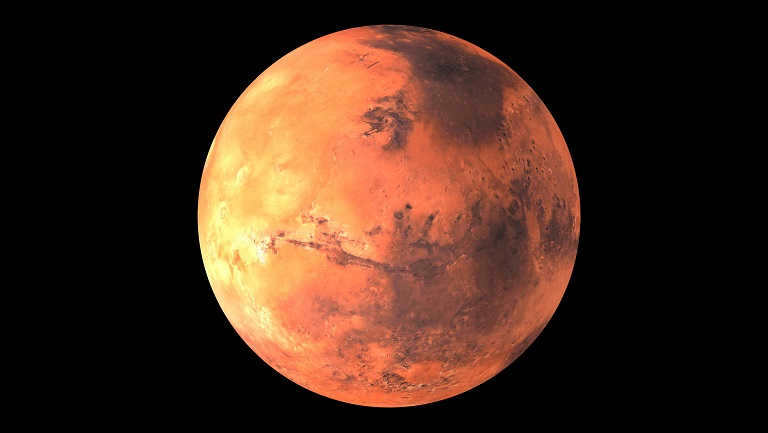
Mars is of a considerably smaller size compared to Earth. Its diameter is roughly twice that of Earth and also twice the diameter of the Moon.
The planet’s reddish hue, which earned it the name of the ancient Roman god of war, is a result of the abundance of iron oxide on its surface.
Mars experiences extremely low temperatures, with an average of -47 °C. However, unlike Venus, it goes through periods of both warmth and cold; in summer, temperatures can rise to 20 degrees Celsius during the day at certain locations, while dropping to as low as -90 °C at night. This significant temperature difference is a result of the planet’s winds and its highly rarified atmosphere.
Mars possesses the most elevated mountains and the most profound depressions out of all the planets known in our solar system. Additionally, it boasts the largest volcanoes.
Water can be found on Mars, albeit in the form of ice due to the low temperatures. However, recent scientific findings suggest the existence of subglacial lakes where water remains unfrozen. This discovery holds immense significance as the presence of water is a crucial factor for supporting life on the planet.
Regrettably, despite extensive research, no living organisms have been detected on Mars thus far.
Phobos and Deimos, the two satellites of Mars, have also been extensively studied. They are relatively small and positioned in close proximity to Mars, albeit by cosmic standards. In comparison to the Moon, Phobos is 158 times smaller in radius, while Deimos is 290 times smaller. As for their distances, the Moon is situated 384 thousand kilometers away from Earth, Deimos is positioned 23 thousand kilometers from Mars, and Phobos is just a stone’s throw away at 9 thousand kilometers from Mars.
Jupiter
Jupiter is the largest planet in our Solar System, weighing 300 times more than Earth and having a diameter 11 times greater. This massive planet gets its name from the primary god in Roman mythology.
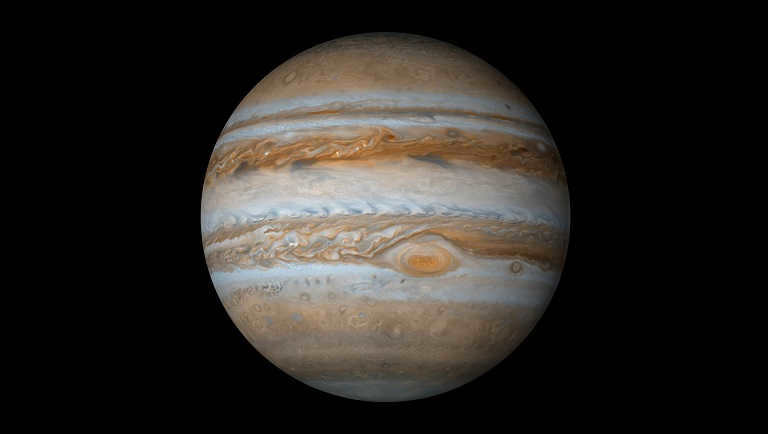
A single rotation on Jupiter takes 10 hours, equivalent to a day on Earth, while its orbit around the sun takes 12 Earth years to complete.
Jupiter lacks a solid surface, consisting entirely of gas. This unique composition gives it a star-like appearance, leading scientists to speculate that with a higher concentration of hydrogen and helium, Jupiter could have become a star itself.
Jupiter boasts an impressive collection of 69 satellites, with the largest ones including Europa, Io, Callisto, and Ganymede. These satellites were first observed by the renowned astronomer Galileo Galilei in 1610.
Above the clouds of Jupiter, the temperature is extremely cold (around -145°C), but it gradually becomes “warmer” as you move towards the center. Interestingly, the core of Jupiter is even hotter than the surface of the Sun, reaching temperatures over 24,000°C.
One of the most well-known aspects of Jupiter is its red spot, which constantly changes in color, size, and shape. This massive hurricane, visible in photographs of the planet, is not a physical feature of the planet’s surface but rather a swirling storm. The red spot is three times larger than the diameter of Earth and can reach speeds of up to 450 kilometers per hour.
Saturn
Saturn is similar to Jupiter in many ways. It is the second largest planet in the solar system and does not have a solid surface. The atmosphere composition and motion characteristics are also similar. One reason for its name is its association with Jupiter in Roman mythology, where Saturn is the father of Jupiter. Another possible reason is the planet’s slow revolution around the Sun, taking 30 Earth years, which aligns with Saturn being the god of time or agriculture in Roman mythology.
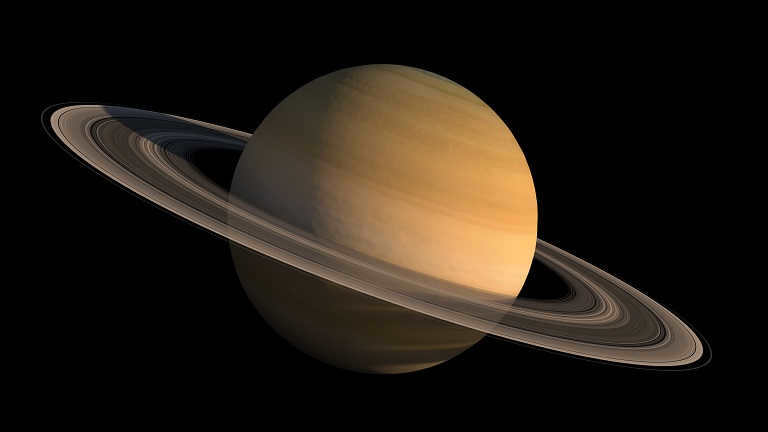
Saturn rotates at a rapid pace, completing a full rotation in just 10 hours and 33 minutes.
One of Saturn’s most notable characteristics is its magnificent ring system. While all four gas giant planets possess rings composed of ice, dust, and rock, Saturn’s rings are the most prominent. These rings are incredibly thin, measuring less than a kilometer in thickness and boasting a diameter of approximately 250,000 km. Although astronomers discovered Saturn’s iconic rings in 1610, the formation process behind them remains a mystery.
Among the planets visible to the naked eye, Saturn is the farthest from Earth, requiring no special equipment for observation.
Currently, we have identified 53 satellites orbiting Saturn, but there is a possibility that more exist.
Saturn possesses the phenomenon of auroras in its northern regions. Additionally, peculiar cloud formations with an almost perfect hexagonal shape have been observed on the planet.
Similar to Jupiter, the upper atmosphere of Saturn experiences extremely low temperatures, reaching as low as -175°C, and gradually increases towards the planet’s core, where temperatures can reach up to 11,700°C. As a result, Saturn generates its own substantial energy, surpassing the amount it receives from the Sun.
Uranus
The discovery of Uranus in 1781 by the English astronomer William Herschel marked a significant milestone in human knowledge. Prior to the invention of the telescope, people were unaware of the existence of this distant planet. In accordance with naming conventions, Uranus was named after a deity from Greek mythology rather than Roman mythology. Specifically, Uranus is associated with the god of the sky.
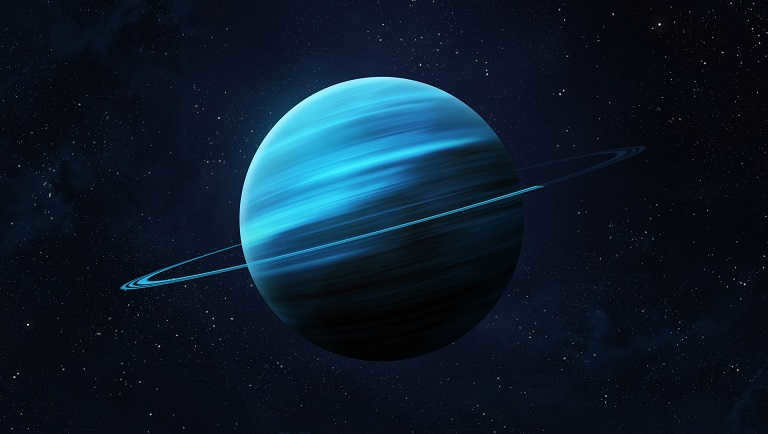
Prior to its official discovery, astronomers had observed the planet numerous times and even documented it in their records, although they classified it as a faint star.
The mass of Uranus is nearly 15 times that of Earth.
Uranus is the coldest planet in the solar system, although it is not the farthest from the Sun (Neptune is farther away). This planet holds the record for the lowest recorded temperature: -224 °C.
Uranus lacks a solid surface, but it is not solely composed of gas (like Saturn and Jupiter): the gaseous atmosphere gradually transitions into liquid layers composed of a mixture of water, ammonia, and methane. Due to its low temperatures, these liquids are in the form of ice, which is why astronomers refer to Uranus as an “ice giant.”
A day on Uranus lasts 17 Earth hours, while a year lasts 84 Earth years.
One intriguing aspect of this celestial body is its unique orientation: Uranus spins on its axis in a manner resembling it “resting on its side”. As a result of this orientation, the “seasons” experienced on the planet are rather extraordinary: 42 years of unending “summer” and sunlight in the hemisphere facing the Sun, followed by an uninterrupted “polar night” of 42 years in the opposite hemisphere. Subsequently, the hemispheres undergo a switch.
In terms of appearance, Uranus exhibits a visually striking blue-green hue, which can be attributed to the presence of trace amounts of methane within its atmosphere.
Neptune
Neptune, the farthest planet from the Sun, was only discovered in 1846, much later than the other planets. Its discovery was not the result of direct observations, but rather a product of mathematical calculations. The planet was named after Neptune, the Roman god of the sea, because of its distinct blue color caused by the abundance of methane in its atmosphere.
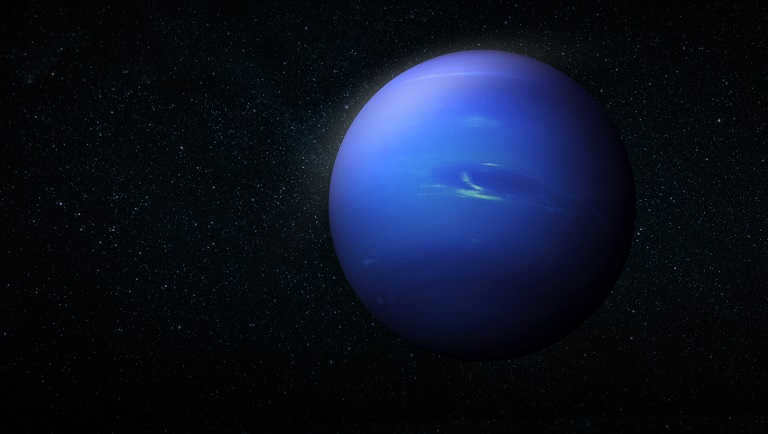
Neptune is one of the biggest planets within the Solar System, with a mass that is 17.2 times that of Earth. In terms of size, Neptune is nearly four times larger than our planet.
Neptune is primarily composed of gas and ice, with a rocky core that, according to some estimates, is the same size as Earth.
A day on Neptune lasts approximately 16 hours, while a year on this planet is the longest compared to other planets, lasting around 165 Earth years.
Neptune experiences extremely cold temperatures, with an average temperature of around -210°C.
Out of all the celestial bodies in the solar system, Uranus holds the record for the lowest temperature. However, on Neptune’s moon Triton, the temperature drops even further to -235 °C. What’s more, Triton’s surface is incredibly dynamic, with frequent volcanic eruptions and geysers.
Neptune boasts a total of 14 satellites orbiting around it. Among them, Triton is the largest, measuring approximately 2700 km in diameter.
Exploring Neptune is a challenging task due to its great distance from Earth. The Voyager 2 space probe, a research vessel, is the only spacecraft that has come relatively close to Neptune, and even then, it was still 5,000 kilometers away from the planet’s surface. The data collected during this mission provided valuable insights into Neptune’s atmosphere, rings, and satellites. However, there are currently no plans to send another spacecraft to Neptune in the near future.
Until recently, it was widely believed that there were 9 planets in the solar system, with Pluto being the ninth planet. However, scientists have since reclassified Pluto as a “dwarf planet,” altering its status. Pluto was discovered in 1930, making it a relatively recent addition to our understanding of the solar system.
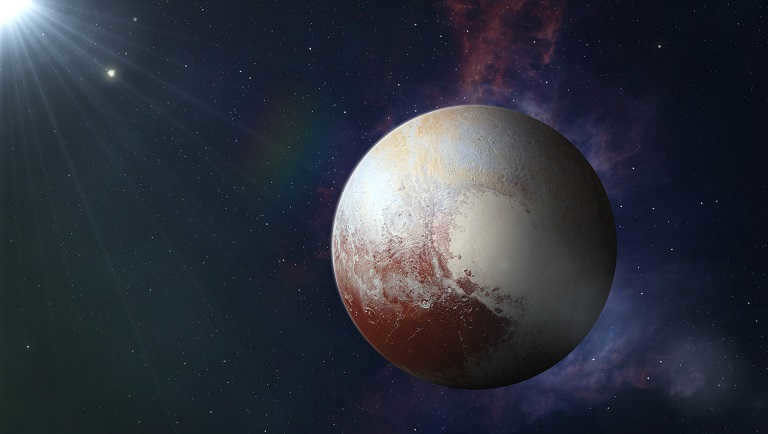
Within the vastness of space, there exists an array of celestial bodies, extending far beyond just planets and stars. Our surroundings include comets, meteors, asteroids, and nebulae, some of which can be observed with the naked eye. The positions of planets and stars are in constant flux, occasionally aligning in what is known as a “planetary parade”. A comet, with its captivating presence resembling a floating orb accompanied by a fiery tail, is a rare sight that unfortunately does not grace our skies as frequently as we desire.
However, the Moon remains consistently visible, presenting itself in a variety of forms: a crescent, a full disc, drawing nearer or receding, emitting a brighter or more subdued light. It is crucial to remember that the Moon does not possess inherent luminosity; rather, its gleam is a reflection of the Sun’s radiant rays.

Through games, stories, and riddles, the online course “Amazing Planet” introduces children to the most significant locations in Russia and around the globe in an enjoyable format.
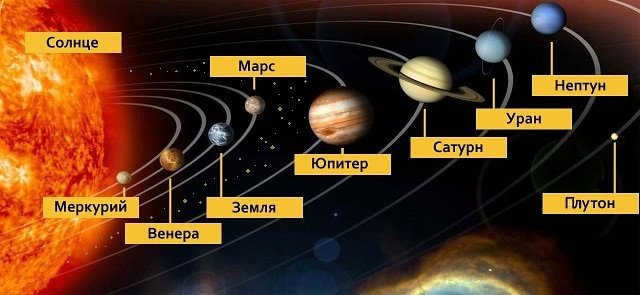
What is the total number of planets in the solar system?
How many planets are there in the solar system? This question doesn’t have a straightforward answer. Historically, it was widely accepted that there are nine planets in the solar system:
Mercury, Venus, Earth, Mars, Jupiter, Saturn, Uranus, Neptune, and Pluto.
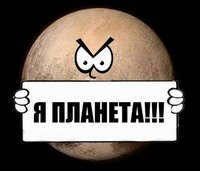
However, on August 24, 2006, Pluto lost its status as a planet. This decision was made following the discovery of the planet Eridas and other smaller celestial bodies within the solar system, which prompted a reevaluation of what should be considered a planet.
Several criteria were established to define a “true” planet, and it was determined that Pluto did not meet all of them.
As a result, Pluto was reclassified as a dwarf planet, joining the likes of Ceres – formerly known as asteroid number 1 in the Main Asteroid Belt located between Mars and Jupiter.
When attempting to determine the number of planets in the Solar System, the situation becomes even more perplexing. This is because, in addition to the traditional planets, there are now dwarf planets.
Furthermore, there are also small planets that were previously classified as large asteroids. For instance, Vesta, the second asteroid in the asteroid belt.
Additionally, there are Erida, Make-Make-Make, Haumea, and several other small planets in the solar system, and it is unclear whether they should be classified as dwarf planets or minor planets. It is worth noting that some small asteroids are also referred to as minor planets in literature. For instance, the asteroid Icarus, which is only about 1 kilometer in size, is frequently mentioned as a minor planet.
So, which of these celestial bodies should be considered when determining the total number of planets in the solar system?
Overall, “we aimed for the best outcome, but the result was as usual.”
It is interesting that numerous astronomers and regular individuals are “advocating” for Pluto, persisting in classifying it as a planet, occasionally arranging small protests and actively promoting this notion online (mostly overseas).
Thus, when addressing the inquiry “how many planets exist in the solar system”, it is simplest to state “eight” concisely and refrain from engaging in any further debate. Otherwise, it will promptly become evident that there isn’t a definitive answer 🙂
The immense planets are the most enormous planets in the entirety of the solar system
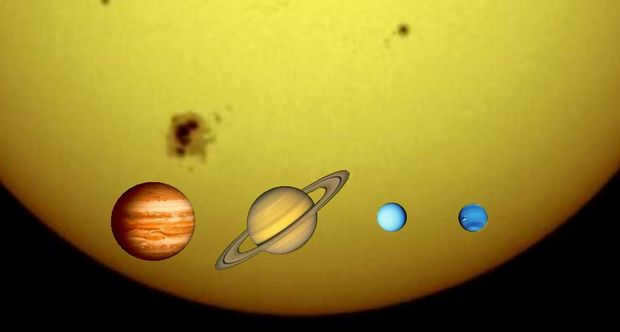
There exist four immense planets in the solar system: Jupiter, Saturn, Uranus, and Neptune. These planets are commonly referred to as the “outer” planets of the solar system due to their placement beyond the Main Asteroid Belt.
When it comes to dimensions, two distinct pairs are evident among these colossal planets.
Leading the pack is Jupiter, the largest giant planet, with Saturn trailing closely behind.
On the other hand, Uranus and Neptune are noticeably smaller than the first two planets and are situated at a greater distance from the Sun.
Observe the comparative sizes of the giant planets in relation to the Sun:
The giant planets serve as a shield for the inner planets of our solar system, safeguarding them from potential asteroid collisions. Without the presence of these colossal celestial bodies, the chances of our Earth being struck by asteroids and comets would increase significantly, potentially by hundreds of times! So, how exactly do these giant planets protect us from these unwelcome visitors?
To gain a deeper understanding of the largest planets in our solar system, please explore the information provided below:
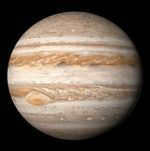 Jupiter the largest planet | Saturn the ringed planet | Uranus the icy world, known as the coldest planet | Neptune the farthest planet in our solar system |
Planets in the Earth group
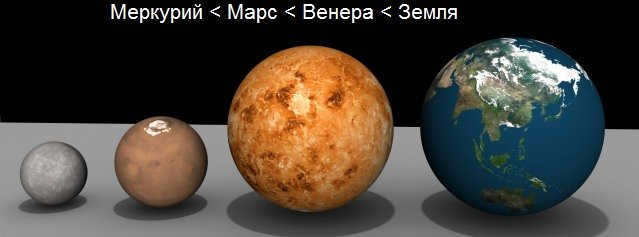
The Earth group of planets consists of four planets within the solar system that share similarities in terms of size and composition: Mercury, Venus, Earth, and Mars. Since Earth is one of these planets, they are all classified as Earth-group planets. These planets have comparable sizes, with Venus and Earth being particularly similar. The proximity to the Sun results in relatively high temperatures on all four planets. Unlike the giant planets, which are predominantly composed of gas and ice, these Earth-group planets are primarily composed of rock.
Mercury, the planet closest to the Sun and the smallest planet in our solar system, is commonly known for its extreme temperatures. On the side facing the Sun, temperatures can reach a scorching +427°C. However, due to its lack of atmosphere, the night side of Mercury can be as cold as -170°C. Additionally, at the poles, where the Sun is low, there is believed to be a layer of underground permafrost.
Venus, once thought of as Earth’s “sister” planet, was revealed to be an inhospitable environment when Soviet research stations landed on its surface. With temperatures reaching a staggering +475°C and atmospheric pressure nearly one hundred times that of Earth, not to mention an atmosphere filled with poisonous compounds of sulfur and chlorine, colonizing Venus would be an incredibly challenging feat.
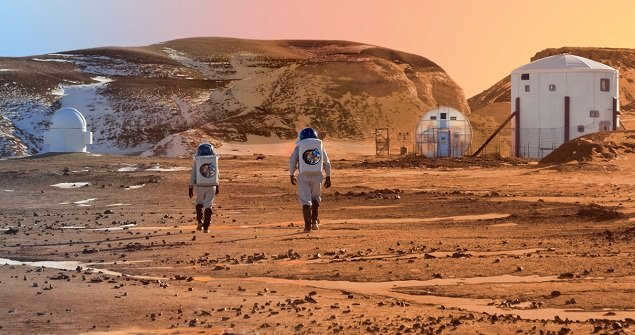

Mars, also known as the red planet, is the farthest planet in the Earth group within the solar system.
Similar to Earth, Mars is accompanied by two satellites, namely Phobos and Deimos.
This planet is primarily characterized by its cold, rocky, and arid environment. Only at the equator during noon does the temperature rise to approximately +20°C, while the rest of the time it experiences extreme cold, dropping to as low as -153°C at the poles.
Mars lacks a magnetosphere, which results in the harsh exposure of its surface to cosmic radiation.
The atmosphere is extremely thin and unsuitable for human respiration, although its density is sufficient to occasionally generate powerful dust storms.
Despite these challenges, Mars stands out as the most promising candidate for future colonization within the solar system.
To learn more about the planets within the Earth group, refer to the article on “The Largest Planets in the Solar System.”
The biggest planet in our solar system
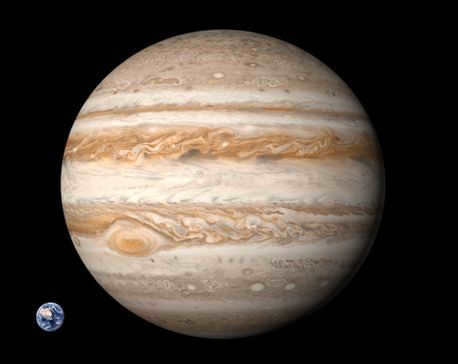
Jupiter, the largest planet in our solar system, is located as the fifth planet from the Sun, beyond the Main Asteroid Belt. Take a look at the comparison of Jupiter and Earth: Jupiter has a diameter 11 times larger than Earth’s and a mass 318 times greater. The immense size of Jupiter results in different parts of its atmosphere rotating at varying speeds, creating the distinct belts visible in the image. In the bottom left corner, you can spot Jupiter’s renowned Great Red Spot, an enormous atmospheric vortex that has captivated observers for centuries.
What is the smallest planet in the solar system? This is not such an easy question.
Currently, it is widely acknowledged that the smallest planet in the solar system is Mercury, as mentioned earlier. However, it is worth noting that Pluto, until August 24, 2006, was considered the smallest planet in the solar system.
More observant readers may remember that Pluto is actually a dwarf planet. And there are a total of five of them. The smallest dwarf planet is Ceres, with a diameter of approximately 900 kilometers.
But that’s not all.





